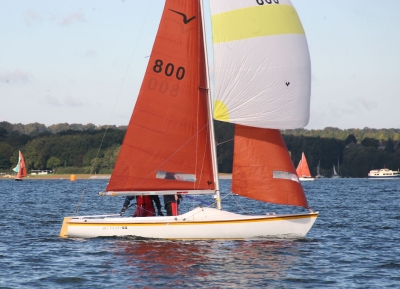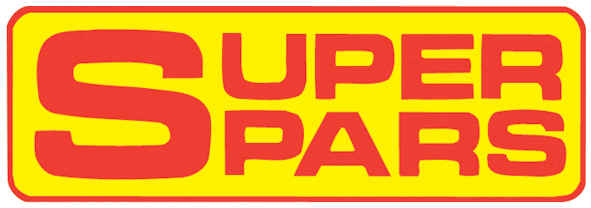Squib
- The Boat
- Racing Record
- Why Super Spars?
- Masts
- Booms
- Options
- Tuning
- Testimonials
- Useful Links

The Squib is a 19ft keel boat designed by Oliver Lee. These tough little boats are sailed all around the UK and Ireland in over 30 different fleets. The Squib is the UK’s most popular Keelboat and it is easy to see why – they are extremely sea worthy yet fun to sail and they provide close, friendly and safe one design competition. Squibs are for everyone and the class associationr website provides you with all the information you need to find out what makes them so special!
The National Squib is a one design racing keelboat, originally designed by Oliver Lee in 1967. The class association has over 600 members. There are around 30 fleets in the UK and Ireland, racing at club, regional and national levels, on coastal, estuary and inland waters.
The Squib is just under 6.0m in length, with a 1.87m beam and a fin keel of 1m draft. Its two person racing crew use Jib, Main and traditional Spinnaker with a total sail area of 29m2. Its all-up weight is 680kg, so a Squib can be trailed by a medium-sized car.
The Squib has been described as “a lovely little yacht” but when being sailed competitively can readily be appreciated for performance characteristics more akin to a racing dinghy. One of the main strengths of the one design Squib is that a properly prepared boat – either a new one or a boat originally up to forty years old, can be sailed competitively in the national fleet for 10 or even twenty years, thus making the best of any initial investment. It is not necessary to change boats regularly to be competitive.
The Squib was designed by Oliver Lee in 1967 as a scaled down version of the Ajax 23. The prototype was a cold moulded wooden hull, with an iron keel. It was extensively and successfully tested in 1967/68 and was used as a plug for the first GRP Squib launched in June 1968. The first production boat was No.11, called Squib. It has been restored by Tony Saltonstall and is now sailed regularly by Dick Batt on the South coast.
The first fleet was formed at the Royal Corinthian YC in Burnham, where the first 150 or so boats were built by Oliver Lee (up to 157 Cheque Mate). From the early 1970s the production was transferred to Hunter Boats in Rochford, Essex (Boat numbers 158 Hera to 724 Tais).
Soon Squib fleets were established elsewhere on the East Coast, at Waldringfield and Aldeburgh, and also spread to the South and South West Coasts, Brixham, and to Wales at Abersoch and Anglesey.
The success of the Squib design is demonstrated by the rapid growth in the number of boats in the early years: three hundred by 1972, and 400 by 1974. The successful adoption of the Squib class by clubs can be seen from the example of the Royal Anglesey Yacht Club. In 1972 one Squib was test sailed, by 1977 twenty-two Squibs were registered and 10 raced regularly.
The Squib has a single licensed builder who uses moulds and keel pattern owned by the class association and approved by the RYA. This is BP Sailboats of Boston, Lincs.
Our high quality consistent tube production is the choice of the large majority of the Squib fleet in the UK and Ireland. We have a well-recognised wide range, flexible rig specifications that suits the weight ranges and wind conditions that Squib sailors have come to expect.
The flexible rig specifications have been refined over many years and allows you to set your rig up for all weather, wind and crew weights. These set ups are constantly being refined with the input of top Squib sailors from around the UK through Tony Saltonstall. Detailed set up rig guides can be found on the Squib website.
The superior mast tubes provide superb gust response with fast reaction return to mast and sail shape which keeps you sailing at maximum speed. If you want to find out more about the real difference, go to about us, Aluminium Technology.
More controllable power by providing high quality mast tubes with exceptional gust response and control.
M11 mast section
B2 boom section
"Superspars have brought a new dimension to the fleet with their M2 section mast and light weight boom. The product is well made, light and very competitively priced.
We swopped five years ago to a Superspar section and it performs well in all conditions, having a good natural curve bend in light to medium airs and lots of ease of depowering in the heavy stuff.
I have also only ever seen one break under high loads- and that was in a big seas Chinese gybe with a slack backstay... not for the squeamish !! The masts and booms come with quality rig and halyards and are down to minimum weights " - Tony Saltonstall
Sailmakers
Batt SailsHyde Sails
Lonton & Gray


